A pizza stone is a tool that lets you take home pizza production to the next level. This dense stone or composite material sits underneath your pizza, allowing it to cook quickly and evenly for that perfect crispy base.
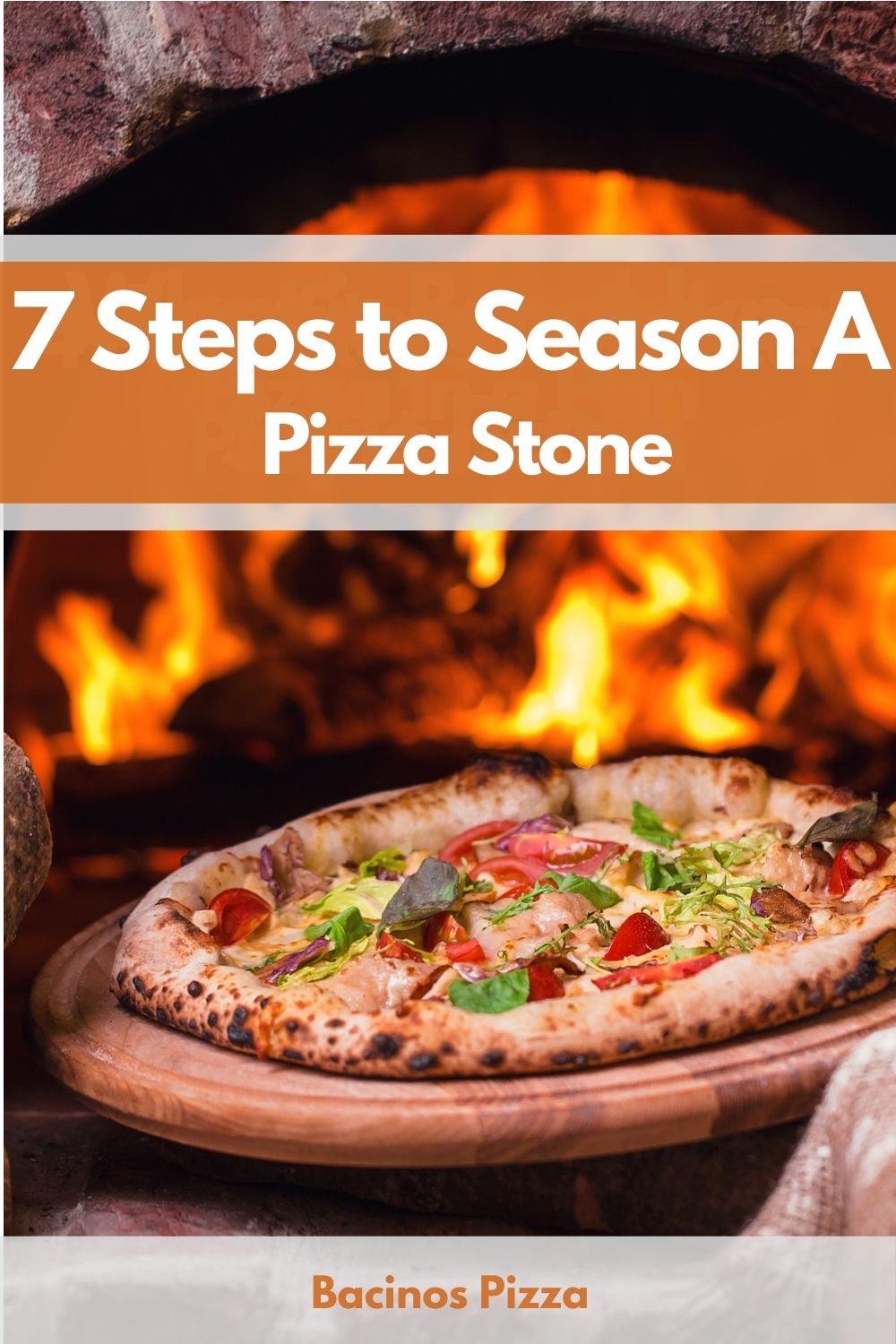
I’ve been using my pizza stone for a long time, but at first, I found it a little daunting because I was confused about how to season it before use.
The information I read was confusing, and it took me a while to figure out the best approach. So, to make things easy for you, I’ve prepared a complete guide on how (and whether) to season a pizza stone.
What Exactly Is A Pizza Stone?
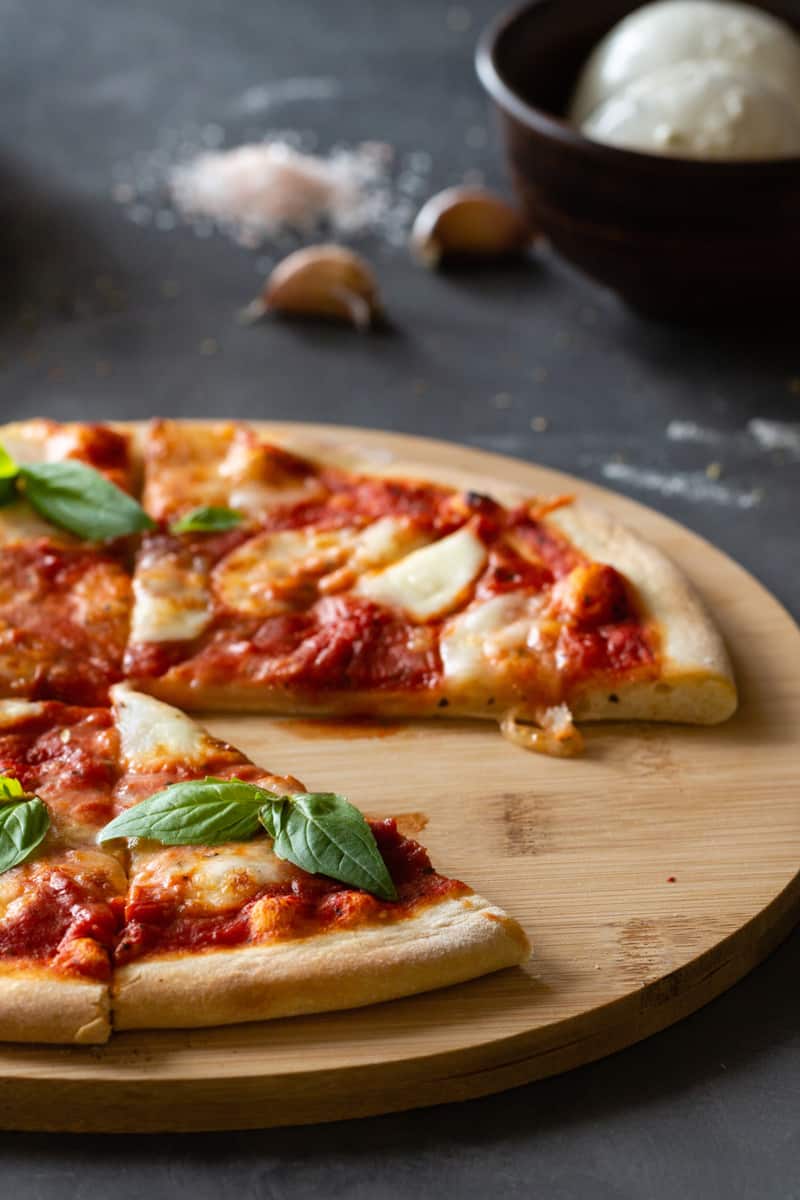
Traditional pizzas bake in a large wood-fired brick or stone oven. And you’re probably familiar with these dome-shaped ovens since many pizzerias give them pride of place in the restaurant.
In a brick oven, pizzas cook exceptionally quickly at a very high temperature on a flat clay surface. This surface is highly efficient at transferring heat to the pizza base, giving it its unique crispness and evenness.
A pizza stone lets you recreate the effect of a brick oven at home by cooking the pizza base in the same way.
Arguments Against Seasoning A Pizza Stone

First, let’s play devil’s advocate and see why some people say you shouldn’t season pizza stones. We’ll look for their reasons for the arguments and see if they stand up to scrutiny.
Some Pizza Stones Are Glazed Or Sealed
Usually, pizza stones are unglazed and come from porous stone or earthenware material. But this isn’t always the case. Some pizza stones are nonporous from the get-go. Check with the manufacturer—if your new pizza stone has a seal already, it doesn’t need to be seasoned.
The Manufacturer Doesn’t Recommend Seasoning The Stone
It’s always a good idea to check the manufacturer’s instructions on how to use your pizza stone.
But, as long as the stone isn’t glazed, I think it’s a good idea to season your pizza stone, even if the manufacturer suggests otherwise. It is because a well-seasoned pizza stone has a nonstick surface that is easier to use, period.
It’s Better To Season Your Pizza Stone Naturally
Some people suggest letting the pizza stone seal naturally with oils from cooked foods. It’s true, though—at high cooking temperatures, fats release into the pizza stone from the meals cooking above. The problem is that this takes time. That means the first few times you use it—the crust will likely stick.
I like to be kind to myself. When I try something new in the kitchen, I want it to work from the start. That’s why I don’t buy into this natural seasoning technique. A well-seasoned pizza stone helps you make great pizza from day one. I can’t see why you wouldn’t want to invest in excellent equipment.
Seasoning A Pizza Stone Makes It Smoke And Smell
Some argue that pre-seasoning a pizza stone with oil encourages it to release foul-smelling smoke as the seasoning oil burns at high cooking temperatures.
But this isn’t an argument against seasoning your pizza stone. It’s simply a warning about what can happen if you don’t do it correctly.
Traditionally, some might suggest using olive oil to season pizza stones, but I don’t recommend it. Despite its delicious flavor, olive oil has a low smoke point and can start smoking or even burn at the high temperatures used when cooking pizza.
Instead, it’s better to use a lighter; and less strong-smelling oil like flaxseed or rapeseed oil to season your stone. You also need to use just the right amount of oil since if you don’t leave any excess—it won’t burn when you cook with it.
Why You Should Season Your Pizza Stone
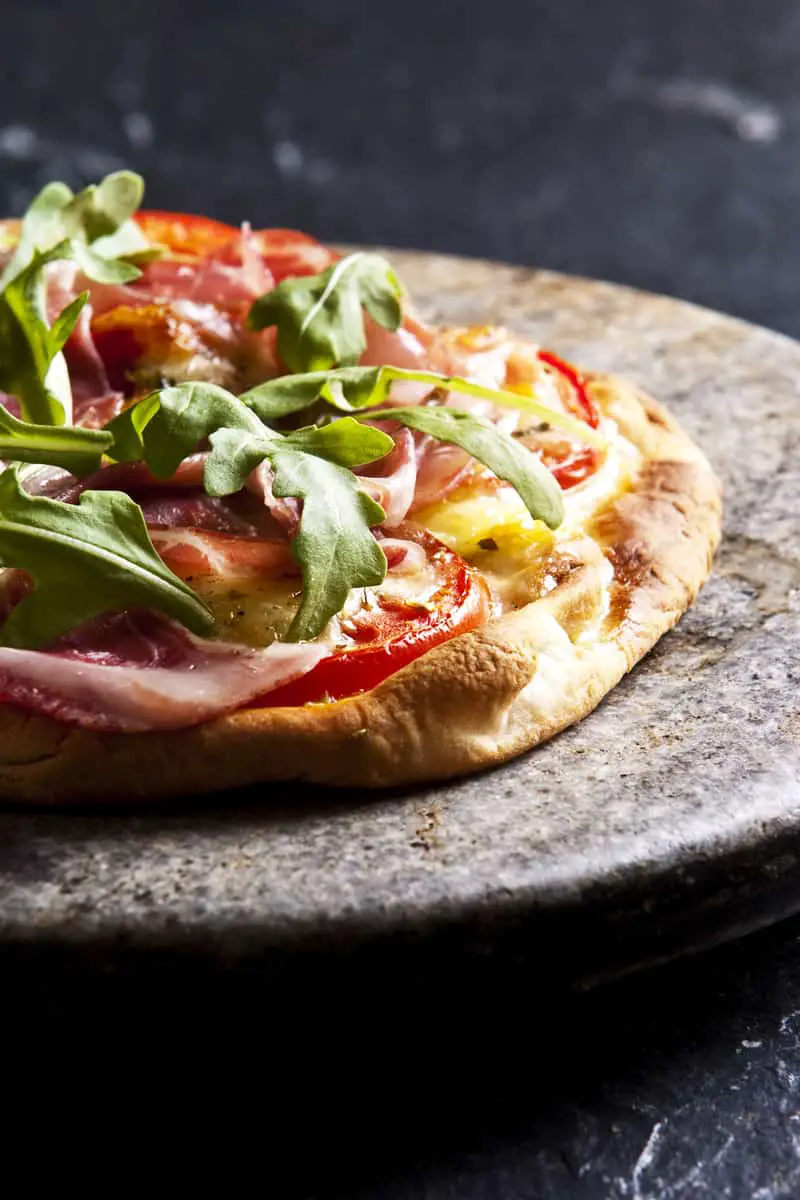
Now let’s look at the compelling reasons why it’s a great idea to season your pizza stone.
Your Pizzas Won’t Stick To The Stone
It is the fundamental reason why you should season a pizza stone. A new unseasoned pizza stone is the opposite of a nonstick surface. There is nothing more demoralizing than finding that your first pizza stone pizza glued to the surface of the pizza stone. It leaves a charred mess that is nearly impossible to clean off.
It can be tricky to clean a pizza stone, especially when it’s new. Avoid using soap or running water since this can permeate the stone, altering the flavor of the food cooked on it and potentially damaging the stone when heated.
Since a seasoned pizza stone has a nonstick surface, it’s far easier to clean.
NB: Don’t be worried if your pizza stone looks discolored or dirty. Long-term pizza stone users will tell you that the darker the stone, the better the pizza. As long as you clean all material from the surface, then your pizza stone is good to go.
You Can Control What Oil Seasons Your Stone
If you season your pizza stone before use, you can control what oil infuses into the pores and seals it. If you don’t do this, you have to rely on seasoning from the fats in the food you cook on it.
But if you’re like me that love strong-tasting pizza toppings, you will want to avoid oils from these toppings seeping into your stone and making it smell. I’m talking about anchovies and spicy salami.
Pre-seasoning the pizza stone with a light oil helps you to avoid this problem.
How To Season A Pizza Stone

So, here’s how to season your pizza stone. You’ll be pleased to discover how simple it is.
You will need the following:
- The pizza stone:remember to confirm whether or not the manufacturer advises you to season the pizza stone.
- An oven: any oven will do; it doesn’t have to be a specialist pizza oven. It just needs to heat up to temperatures of at least 450°F.
- Lint-free cloth: you’re looking for a fine, clean cloth that won’t produce lint.
- Oil: Any natural oil will do, but I recommend light, odor-free oils like flaxseed or rapeseed.
Step-By-Step Guide
Step 1. Prepare The Pizza Stone
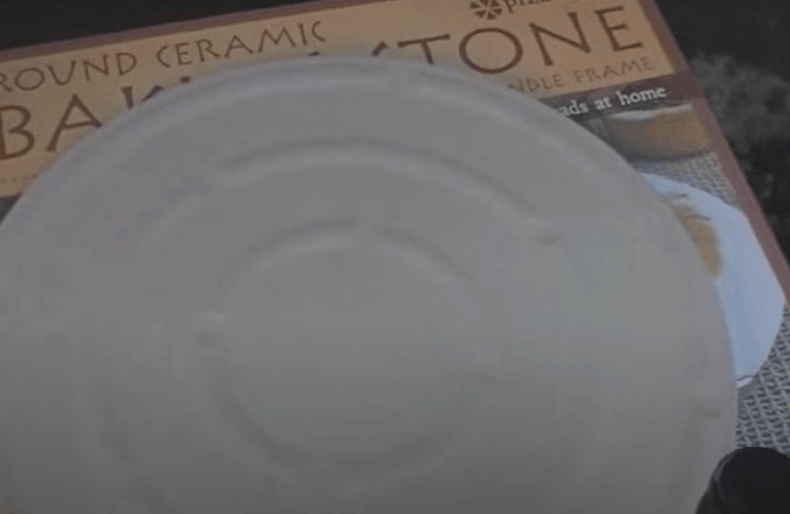
Make sure that the pizza stone is clean and thoroughly dry. In fact, I don’t recommend you clean your pizza stone with water because it’s a porous material. And some of that water gets absorbed into small spaces where you want the oil to go. Better to clean it with a dry cloth.
Step 2. Oil The Pizza Stone
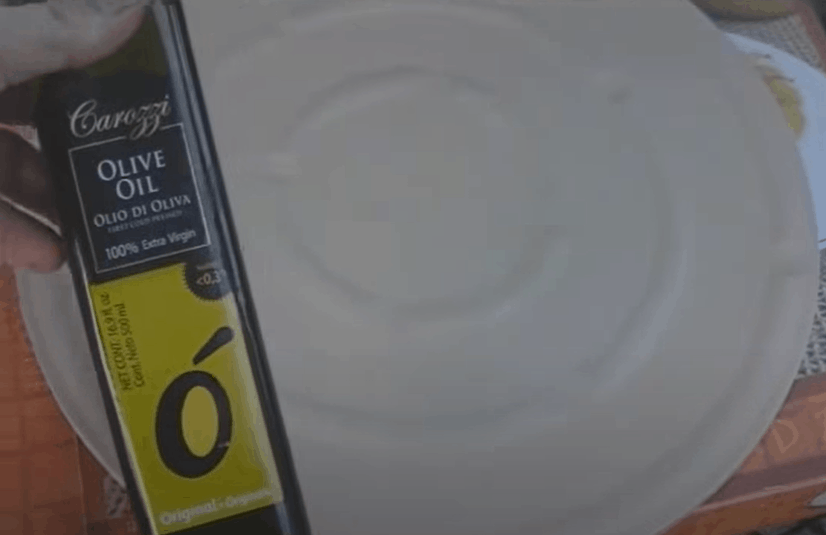
Spread some oil across the top surface of the pizza stone.
Step 3. Spread In The Oil
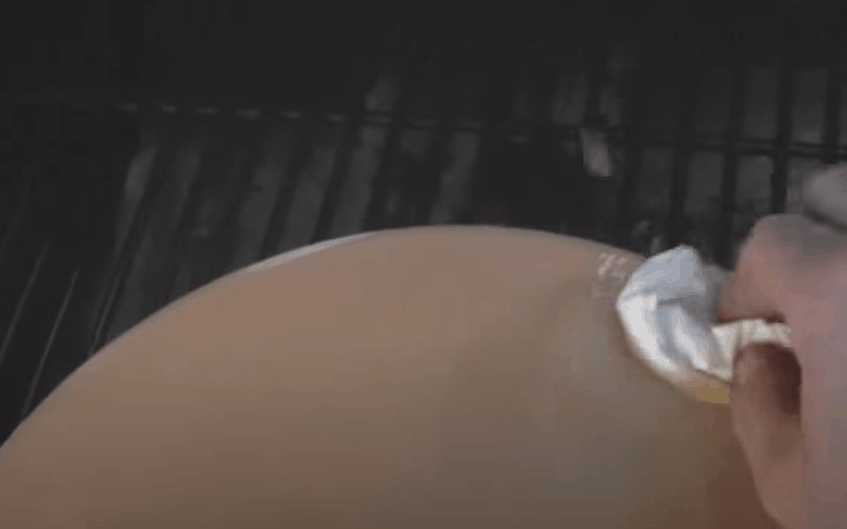
Gently rub the oil into the stone using your cloth in a circular motion. This process helps get oil deep into it and removes excess surface oil. At this stage, the pizza stone will look slippery but not greasy.
Step 4. Heat Your Oven And The Stone
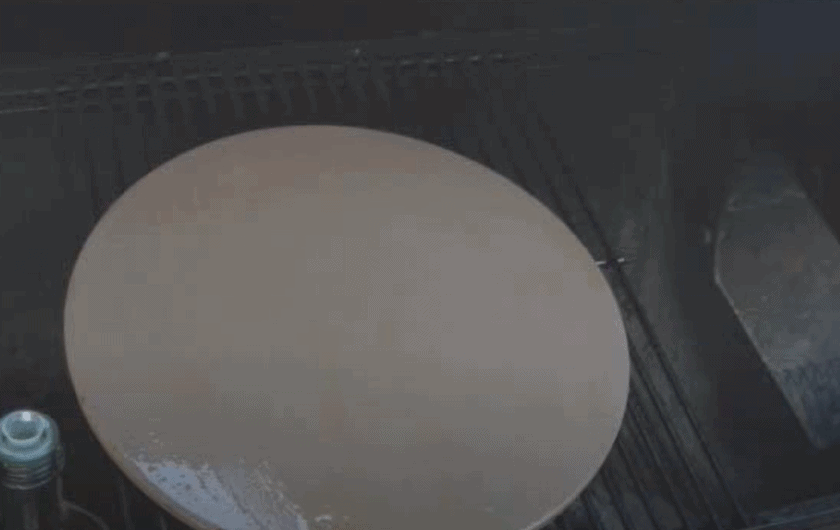
Now turn on your oven and put in the pizza stone. You want to use a minimum temperature of 450°F, but 500°F is better if possible.
NB: DON’T preheat your oven before putting it in the stone. Placing a cold stone in a hot oven increases the risk of cracking or damaging it from the sudden temperature change.
Step 5. Bake The Pizza Stone
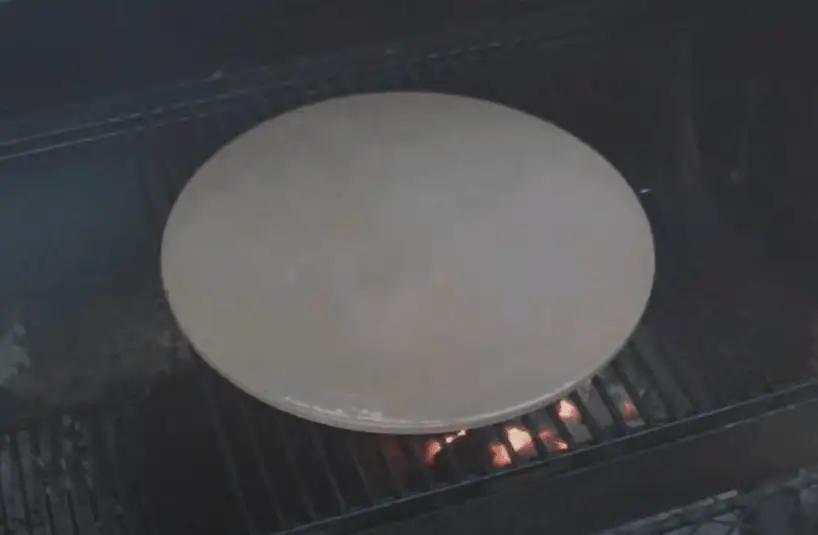
When the stone and the oven have reached full temperature, bake the stone for twenty minutes, then turn off the oven and give the stone plenty of time to cool down. Remember that the whole idea of a pizza stone is that it retains heat. So I recommend air on the side of caution and carefully removing the stone with oven gloves.
You will notice that your pizza stone now has a darker color where the oil has been infused and baked into the surface.
Step 6. Do It Again, And Again
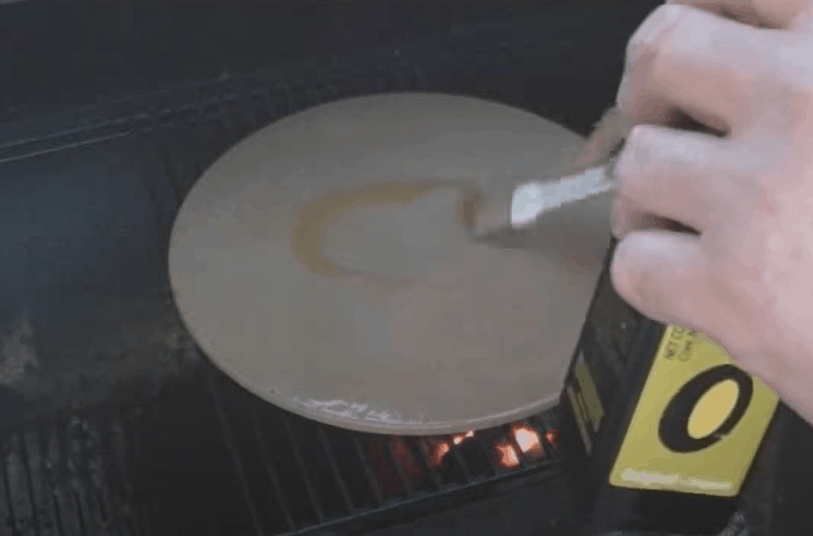
Now repeat the process at least two more times. The stone will darken further and take on a slightly glazed look. Trust your judgment, and when it looks like it’s a nonstick surface, then you’re done.
Step 7. Start Making Pizzas!
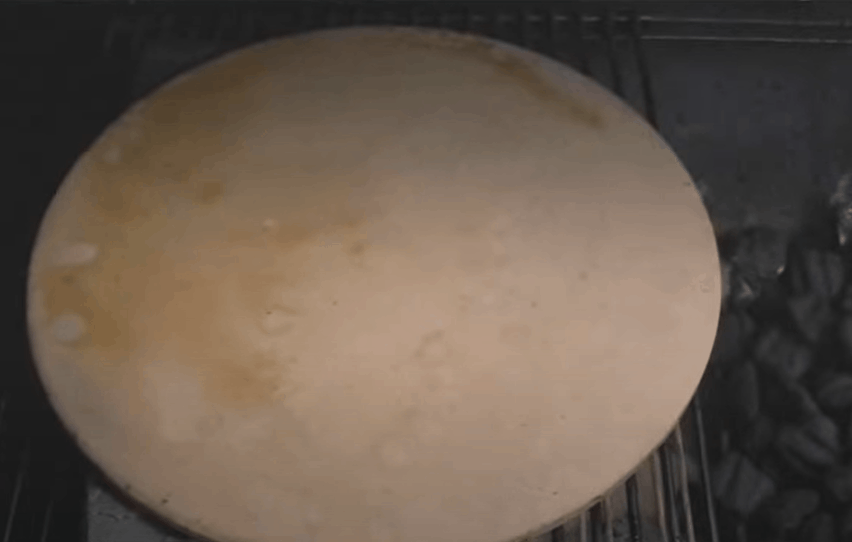
And that’s it; you’re good to go. Enjoy your pizzas.
Frequently Asked Questions
1. What do you put on the pizza stone so the dough doesn’t stick?
Most dust cornmeal on their pizza stone to prevent sticking and to add flavor. Unlike flour, cornmeal has a distinctive texture that adds allure to the pie. Also, flour burns fast if you place it when pre-heating.
You can use this technique if your pizza stone is not well-seasoned in the first place.
2. Should I butter the pizza stone?
Aside from oil, I’ve also seen home bakers use butter to season their pizza stones. However, it’s important to note that butter has a lower smoke point than most oils, so it can burn quickly during the process. Therefore, using butter may not be the most effective choice for seasoning a pizza stone. So, it’s either invest in quality baking stone or let it burn after a few batches.
Lastly, always keep your base clean if you don’t want to waste your time with sticky dough.
3. What is the best oil to season my pizza stone?
There is no golden rule on what to use or which blend works best. But it should have a high smoke point so it doesn’t darken quickly.
Aside from flaxseed and rapeseed oil, you can also try avocado, vegetable, and canola oil. Remember that the process can impart a taste to your pizza. So be sure you like the taste of the product you’re using before seasoning it.
4. When is it not recommended to season a pizza stone?
When you check the packaging, it’ll say not to season since it’s already non-stick. So here are companies that have specific notes not to layer it with oil:
- Pizzacraft: they offer ceramic style and glazed ThermaBond baking stone.
- California Pizza Stone: they have a selection of stone shapes made from a high-grade non-toxic Mullite mixture.
- Menesia: the company sells two-sided pizza stones that you can use to bake a pie or grill BBQ. The black side is non-stick, preventing the crust from fusing to it.
- NerdChef Steel Stone: their pizza stone comes pre-seasoned and can bake pizza quickly. Although, you might find their products heavy because of the quality.
Take Away
So, to pull everything together, it’s a great idea to season your pizza stone in all instances except where the pizza stone is already glazed and nonporous.
A sealed pizza stone will give you a nonstick, no-hassle cooking surface from the start, and this means that right away, you’ll be making delicious pizzas with an even crispy base
If you follow the simple guide above, you can quickly and easily give your pizza stone a smooth and well-seasoned finish that stops food from sticking.
Once you discover the delights of a seasoned pizza stone, you’ll never go back, and you’ll probably find that you cooking pizza a lot more often than before.
Buon appetito!
If you have any questions or comments about how to season a pizza stone, please share them below.
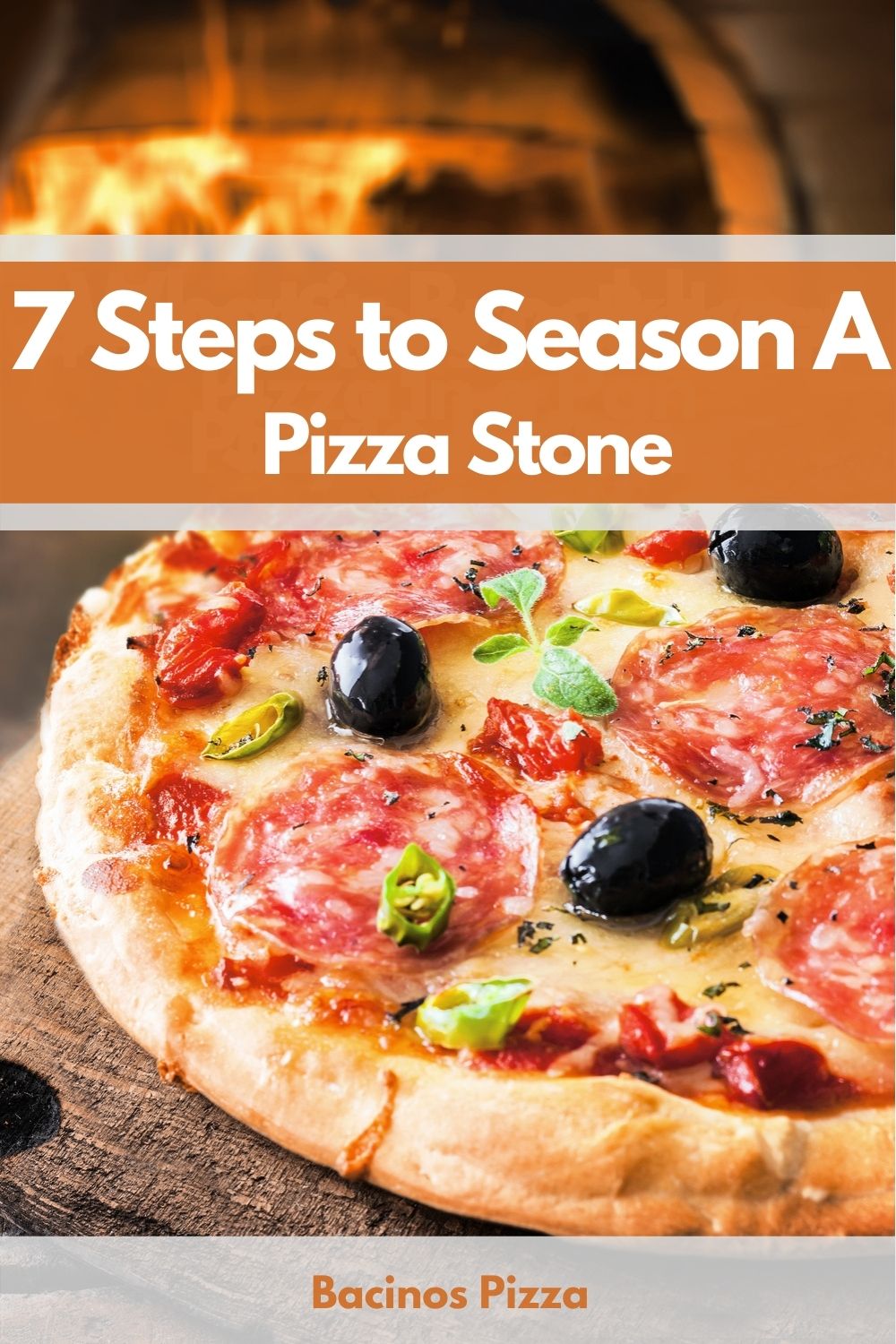

Julie has five years of experience in the restaurant industry, she decided to share her knowledge about her liking and fondness for food and pizza, of course, cooking as her love language. She’s very passionate about what she’s doing, making all the things she writes regarding pizza recipes, very amazing!